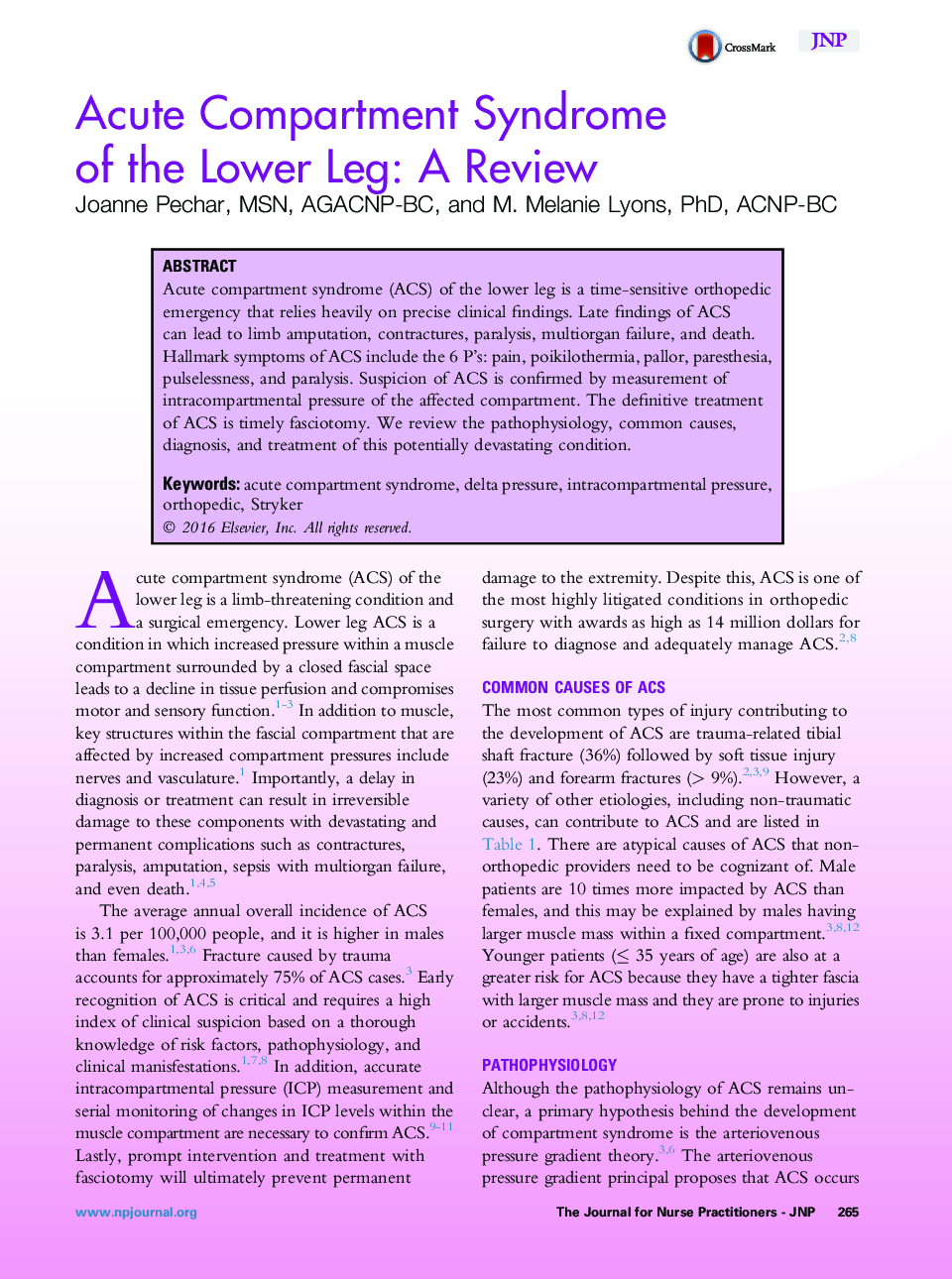| Article ID | Journal | Published Year | Pages | File Type |
|---|---|---|---|---|
| 2660173 | The Journal for Nurse Practitioners | 2016 | 6 Pages |
•Acute compartment syndrome (ACS) of the lower leg is a time-sensitive, limb-threatening surgical emergency.•Late findings of ACS can lead to limb amputation, contractures, paralysis, multiorgan failure, and death.•Diagnosis is based on clinical suspicion, assessment of the 6 P’s (pain, poikilothermia, pallor, paresthesia, pulselessness, and paralysis), and intracompartmental pressure (ICP).•ICP measurement above 30 mm Hg requires emergent surgical decompression.•The gold standard of ACS treatment is full fasciotomy.
Acute compartment syndrome (ACS) of the lower leg is a time-sensitive orthopedic emergency that relies heavily on precise clinical findings. Late findings of ACS can lead to limb amputation, contractures, paralysis, multiorgan failure, and death. Hallmark symptoms of ACS include the 6 P's: pain, poikilothermia, pallor, paresthesia, pulselessness, and paralysis. Suspicion of ACS is confirmed by measurement of intracompartmental pressure of the affected compartment. The definitive treatment of ACS is timely fasciotomy. We review the pathophysiology, common causes, diagnosis, and treatment of this potentially devastating condition.
